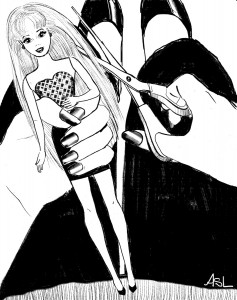Fashioning Flawlessness

The show was staged to coincide with the fashionista gathering in order to make a point: the fashion industry expects “absolute flawlessness,” in the words of feminist media activist Jean Kilbourne. While we generally believe that these beauty standards derive from nature, models and beauty queens increasingly use plastic surgery and digital enhancements to achieve unattainable ideals in terms of body type, facial features, skin complexion and eternal youth.
A model’s value depends on her ability to achieve and maintain flawless beauty. Sociologists Joanne Entwistle and Elizabeth Wissinger, writing in The Sociological Review in 2005, argue that since models’ sense of identity and self-worth are closely linked to their value in the industry, those who deviate from any of these rigid standards are devalued both professionally and personally.
But in a beauty commercial parody that recently went viral, blogger Jesse Rosten said it best: the only way to look like a “real” cover girl is to use Photoshop.
